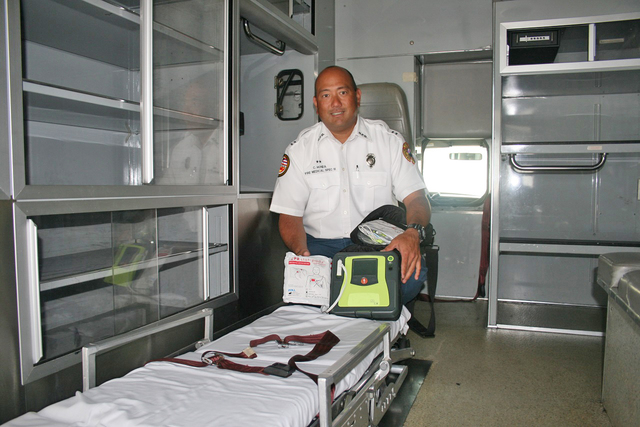Few people live to tell about experiencing cardiac arrest.
Few people live to tell about experiencing cardiac arrest.
When it occurs outside of a hospital setting, only 8 or 9 percent of Hawaii’s cardiac arrest patients are successfully resuscitated and able to lead a “somewhat normal life afterward,” says Chris Honda, Emergency Medical Services Captain with the County of Hawaii Fire Department.
It doesn’t have to be that way, however. By improving training of the public and availability of lifesaving equipment, cardiac arrest patients can be given a fighting chance during the precious minutes spent waiting for paramedics to respond.
In Seattle, survival rates are as high as 62 percent, Honda said. That number represents a jump from 45 percent just a few years ago, brought about by a concerted education effort by medical professionals there. Their success led to the founding of the Resuscitation Academy, which hosts EMS managers from around the country to learn techniques to help their communities improve cardiac arrest survival rates.
Last year, Honda and Battalion Chief Lance Uchida, among other Hawaii representatives, attended the academy to learn what they can do to assess the unique challenges to cardiac arrest survival on Hawaii Island, and to address those challenges. Now, they’re beginning to put those lessons into action.
“We are making some improvements, but we can do better,” Uchida said. “So, when we looked at our program and system here, the biggest challenge is our response time. We have 4,000 or so square miles to cover … with 15 advanced life support ambulances strategically placed throughout the island.
“We have (about 200) cardiac arrests a year on our island, and our response times average 8-9 minutes. If nobody’s doing CPR during those 8-9 minutes, the outcome is going to be poor.”
In an effort to educate the public on resuscitation techniques, the fire department has set an ambitious goal of training all high school seniors on the island in CPR and the use of the defibrillators, which can automatically administer shocks to patients whose hearts have stopped. The department is also working to partner with area businesses and community organizations to offer training.
“It’s a simple procedure, people can learn it quickly,” Honda said.
The results of the department’s training efforts were evident just two weeks ago, when a pair of Waiakea High students performed CPR on a classmate whose heart suddenly stopped while they were at a basketball practice at the Wainaku Gym. The student, 17-year-old Ryler Nishimoto, is currently being treated at Kapiolani Medical Center for Women and Children.
In addition to the training, the department hopes to find funding and support to begin a cardiac screening program for high school athletes, in an effort to identify potential illnesses before they put a student-athlete’s life at risk.
The fire department is also working with community partners as part of Hilo Medical Center Foundation’s Be a Lifesaver Hawaii program, which is working to raise awareness and funding for education and the purchase of AEDs for first responders and public locations around the island.
“There’s a gap when it comes to CPR training,” Honda said. “What it is, how to do it, as well as general knowledge about an AED. That’s a big gap that we’ve identified that we’re trying to address.”
For more information, contact Hawaii County’s EMS Division at 961-8319.

